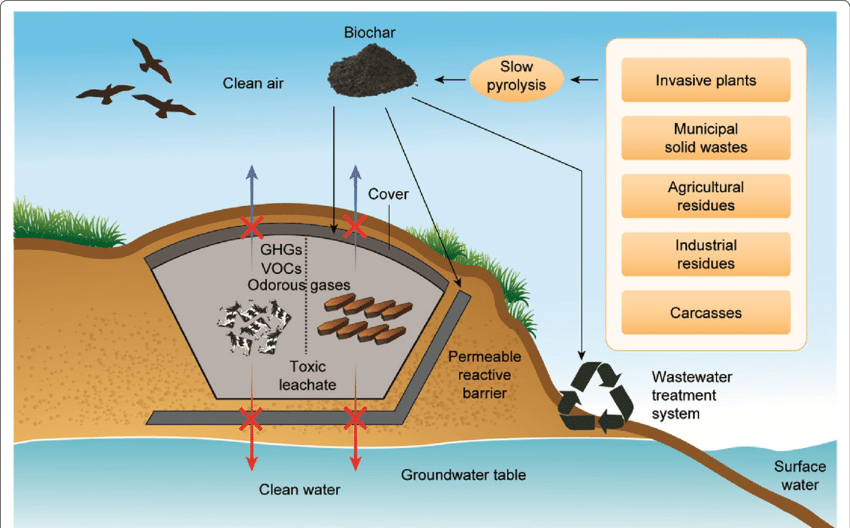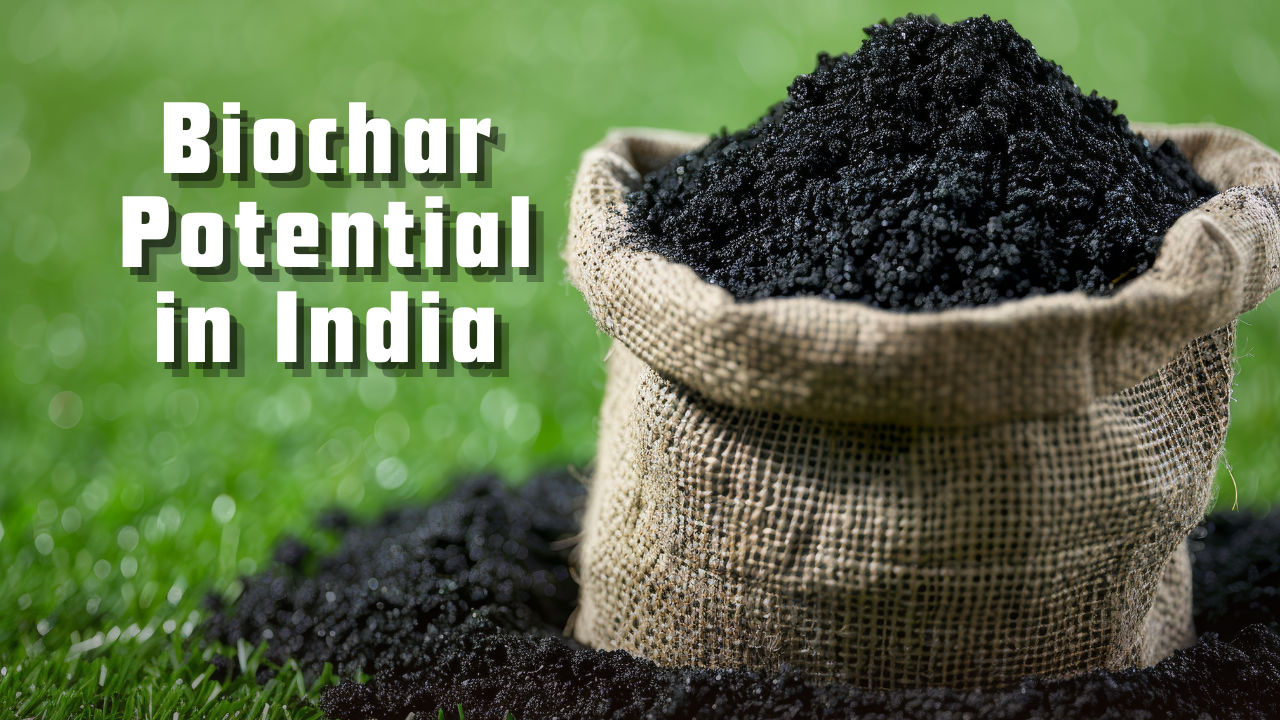Biochar Potential in India
What is the potential of biochar?
Context: Biochar is in focus as a key carbon removal technology ahead of India’s carbon market launch in 2026, offering a sustainable way to manage waste and sequester CO₂ across sectors.

What is Biochar and Its Potential in India?
Biochar is a stable, carbon-rich material produced through the pyrolysis of organic waste, such as agricultural residue and municipal solid waste (MSW). India generates over 600 million metric tonnes of agricultural residue and 60 million tonnes of MSW annually, much of which is openly burnt or dumped, contributing to air pollution and greenhouse gas emissions (methane, nitrous oxide, and CO2).
Key Potential:
- Carbon Sequestration: By utilising 30-50% of surplus waste, India could produce 15-26 million tonnes of biochar, removing approximately 0.1 gigatonnes of CO2-equivalent annually.
- Energy Byproducts: Biochar production yields syngas (20-30 million tonnes) and bio-oil (24-40 million tonnes), which can:
- Generate 8-13 TWh of electricity (0.5-0.7% of India’s annual power generation), offsetting millions of tonnes of coal.
- Replace 12-19 million tonnes of diesel/kerosene (8% of production), reducing crude oil imports and cutting over 2% of fossil-fuel-based emissions.
- Economic and Social Impact: Village-level biochar production could create 5.2 lakh rural jobs, fostering inclusive economic development.
How Does Biochar Serve as a Carbon Sink?
Biochar’s stable chemical structure allows it to sequester carbon in soil for 100-1,000 years, making it an effective long-term carbon sink. Its applications across sectors amplify its potential:
-
Agriculture:
-
-
- Enhances soil organic carbon, restoring degraded soils.
- Improves water retention in semi-dry, nutrient-depleted soils.
- Reduces nitrous oxide emissions (a greenhouse gas 273 times more potent than CO2) by 30-50%.
- Lowers fertiliser use by 10-20% and boosts crop yields by 10-25%.
-
- Carbon Capture: Modified biochar can adsorb CO2 from industrial exhaust gases, though its efficiency is lower than conventional methods.
- Construction: Adding 2-5% biochar to concrete enhances mechanical strength, increases heat resistance by 20%, and sequesters 115 kg of CO2 per cubic meter, making buildings a stable carbon sink.
- Wastewater Treatment: India generates 70 billion litres of wastewater daily, with 72% untreated. One kilogram of biochar can treat 200-500 litres, creating a demand for 2.5-6.3 million tonnes of biochar annually.
What are the challenges hindering the adoption of biochar?
Despite its potential, biochar faces several barriers to large-scale deployment:
- Market and Policy Gaps:
- The absence of standardised feedstock markets and consistent carbon accounting methods undermines investor confidence in carbon credit systems.
- Weak monitoring, reporting, and verification (MRV) frameworks limit market development.
- Lack of coordination across agriculture, energy, and climate policies.
- Technological and Resource Constraints: Evolving technologies and limited resources hinder scalability. Region-specific feedstock standards and optimised biomass utilisation rates are needed.
- Awareness and Business Models: Limited stakeholder awareness of biochar’s benefits. Lack of viable business models for large-scale adoption.
What Is Pyrolysis?
- Pyrolysis is a thermochemical process that involves heating organic material (such as biomass) in the absence of oxygen, leading to thermal decomposition without combustion.
- Temperature: Typically conducted at or above 500°C
- Products formed: Bio-oil (liquid), Bio-char (solid), and Syngas (gas).
Subscribe to our Youtube Channel for more Valuable Content – TheStudyias
Download the App to Subscribe to our Courses – Thestudyias
The Source’s Authority and Ownership of the Article is Claimed By THE STUDY IAS BY MANIKANT SINGH



